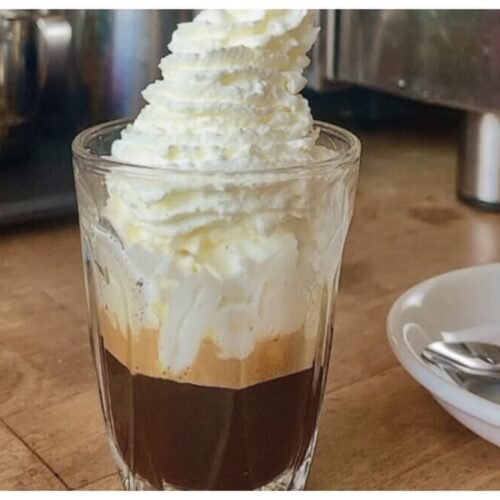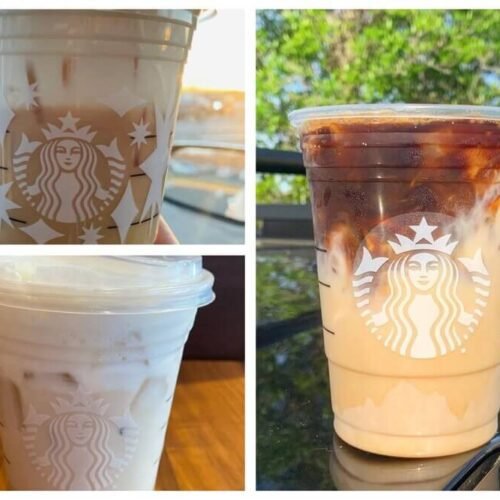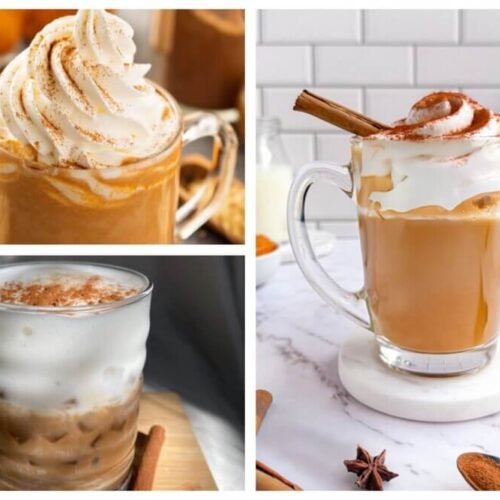
Brewing the perfect pot of coffee for 12 cups can be a challenge, but it’s worth the effort. Picture waking up to a rich, aromatic brew that fills the kitchen with warmth.
Whether you’re gearing up for a busy day or hosting friends, getting the coffee-to-water ratio right is key. This guide will walk you through the essentials, from measuring the coffee to understanding the grind size. Each step matters, and even small tweaks can lead to big flavor improvements.
With the right approach, you’ll be able to brew a pot of coffee that satisfies every time. Ready to make that perfect cup? Let’s get started!
How Much Coffee for 12 Cups
To brew 12 cups of coffee, you’ll need to carefully balance the amount of coffee grounds and water. The general rule is to use 1 to 2 tablespoons of ground coffee per 6 ounces of water. For 12 cups, this translates to approximately 72 ounces of water (about 2130 ml).
Using the golden ratio, you should use about 24 to 48 tablespoons of ground coffee, depending on your preferred coffee strength.
If you prefer to measure by weight, you’ll need about 120 grams of coffee grounds for a standard brew. For a stronger coffee, you might increase this to 144 grams, while for a milder brew, you can use around 96 grams.
In practical terms, this means using about 12 scoops of coffee (assuming a standard coffee scoop holds 2 tablespoons or 10 grams of coffee).
Note: Always consider the grind size and the type of coffee maker you’re using, as these factors also influence the final flavor. Find out more below.

The Golden Ratio: Your Guide to Great Coffee
The foundation of brewing great coffee often revolves around the golden ratio, which is a concept popularized by the Specialty Coffee Association of America.
This ratio is 1 to 2 tablespoons of ground coffee per 6 ounces of water. For a full pot of 12 cups, it translates to about 24 to 48 tablespoons of ground coffee, depending on your preference for a stronger or weaker brew.
Measuring the Perfect Cup: Best Tools and Techniques
Using a Kitchen Scale

Measure in grams to make sure you’re getting the exact amount of coffee you need. The general guideline is to use 10 grams of coffee for every 6 ounces of water.
So, for brewing 12 cups, you would need about 120 grams of ground coffee. This method helps you maintain the ideal coffee-to-water ratio and ensures each pot has the perfect balance.
Standard Coffee Scoops

A typical coffee scoop holds approximately 2 tablespoons of ground coffee, which is about 10 grams. For 12 cups, you would need roughly 12 scoops of coffee.
This method is straightforward and offers a good starting point, especially for those who might be new to brewing large amounts of coffee.
Measuring Cups and Fluid Ounces
A standard cup of coffee generally needs 6 fluid ounces of water. To brew 12 cups, you should prepare about 72 fluid ounces of water, equivalent to approximately 2,130 ml.
Understanding the Grind Size
When brewing 12 cups of coffee, the grind size of your coffee grounds plays a significant role in determining the overall strength and flavor of your brew. Different brewing methods require different grind sizes to ensure proper extraction, which is crucial for making a large pot that tastes just right.
Medium Grind for Drip Coffee Makers

For brewing 12 cups using a drip coffee maker, a medium grind is your best bet. This grind size is like coarse sand and allows water to flow evenly through the coffee grounds.
Drip coffee makers often have a slower brew time, which helps in extracting the right amount of flavor from the grounds.
When preparing a full pot, using a medium grind ensures that each cup is well-balanced and not too strong or too weak.
For 12 cups, use around 120 grams of coffee grounds, or 12 coffee scoops, to match the water flow rate and achieve a smooth, consistent taste throughout the pot.
Coarse Grind for French Presses

If you’re using a French press to brew 12 cups, a coarse grind is essential. The grind size, similar to sea salt, prevents over-extraction during the longer brew time typical for French presses.
For a French press, the ratio might slightly differ, but you can start with 120 grams of coffee grounds for 72 ounces of water.
Pro tip: Adjust the amount of water and coffee according to your taste preferences to find the ideal balance for a rich, satisfying pot of coffee.
Fine Grind for Espresso Machines

While espresso machines aren’t typically used for brewing 12 cups at once, understanding the importance of a fine grind can help if you’re making multiple shots for a large group.
A fine grind, resembling powdered sugar, ensures quick and efficient extraction under high pressure. If you’re using an espresso machine to prepare a large amount of coffee, making several espresso shots and combining them can provide a strong base for various coffee drinks.
Each shot requires about 10 grams of finely ground coffee, and you’ll need to scale up accordingly to get the quantity you need.
Brewing the Perfect Pot: Step-by-Step Guide
- Measure the Coffee Grounds: Depending on your desired strength, measure out 24 to 48 tablespoons of ground coffee or use 12 to 24 scoops.
- Prepare the Water: Measure out 72 ounces (or approximately 2,130 ml) of water.
- Set Up the Coffee Maker: Place the coffee grounds in the filter basket of your drip coffee maker.
- Brew: Start the brewing process, ensuring that the water temperature is optimal for extraction, usually between 195°F and 205°F (90°C to 96°C).
- Adjust to Taste: After brewing, taste the coffee and adjust the ratio if necessary for future brews to better suit your personal taste preferences.
Common Mistakes and How to Avoid Them in Brewing 12 Cups of Coffee

Brewing coffee, especially in large quantities like 12 cups, requires attention to detail and an understanding of common pitfalls. Avoiding these mistakes can help ensure that each pot of coffee is flavorful and satisfying. Here are some of the most common mistakes in coffee brewing and how to avoid them.
Using Too Much or Too Little Coffee
Mistake: One of the most frequent errors in coffee brewing is using an incorrect amount of coffee grounds. Adding too much coffee can result in a brew that is overly strong and bitter, overwhelming the palate. Using too little coffee can lead to a weak, insipid cup that lacks depth and character.
Solution: The general rule of thumb is to use 1 to 2 tablespoons of ground coffee per 6 ounces of water. For a 12-cup pot, this equates to about 24 to 48 tablespoons of ground coffee. Start with this guideline and adjust according to your taste preferences. For a stronger cup, add a little more coffee grounds; for a milder brew, use a bit less.
Tips:
- Use a kitchen scale to measure your coffee grounds in grams for precision. Aim for about 10 grams per 6 ounces of water.
- Adjust gradually to avoid dramatic changes in flavor.
Inconsistent Measurements
Mistake: Inconsistency in measuring coffee and water can lead to unpredictable results. Whether you’re using a standard coffee scoop or a kitchen scale, variations in measurements can cause fluctuations in coffee strength and taste.
Solution: Consistency is key to achieving a great-tasting cup of coffee every time. Using a standard method for measuring, such as a kitchen scale or a consistent scoop size, helps maintain the same ratio of coffee to water each time you brew. This predictability leads to more satisfying results and allows you to fine-tune your coffee to your exact liking.
Tips:
- If using a scoop, ensure it is the same size each time and level off the coffee grounds.
- Measure your water accurately with a measuring cup to ensure you are using the correct amount for the number of cups you’re brewing.

Not Adjusting for Grind Size
Mistake: Using the wrong grind size for your brewing method can lead to poor extraction, resulting in either under-extracted (sour) or over-extracted (bitter) coffee. Each brewing method requires a specific grind size to optimize the extraction process.
Solution: Match your grind size to the brewing method. For drip coffee makers, use a medium grind; for French presses, a coarse grind is best; and for espresso machines, a fine grind is necessary. Ensuring the correct grind size helps in achieving a balanced extraction and a full-flavored cup of coffee.
Tips:
- Invest in a good-quality burr grinder that allows you to adjust the grind size.
- Experiment with different grind sizes to find what works best for your taste preferences and brewing method.
Ignoring the Impact of Water Quality
Mistake: The quality of water used in brewing can significantly affect the taste of your coffee. Using water with too much mineral content or contaminants can impart unwanted flavors to your coffee.
Solution: Use filtered water to brew your coffee. This helps in avoiding any off-tastes and ensures that the natural flavors of the coffee beans shine through. The amount of water used should also match the ratio for the desired strength of your coffee.
Tips:
- Regularly clean your coffee maker to avoid buildup that can affect water quality.
- Avoid using distilled water, as it lacks the minerals needed for proper extraction and can result in flat-tasting coffee.
Not Paying Attention to Water Temperature
Mistake: Brewing coffee with water that is too hot or too cold can lead to improper extraction. Water that is too hot can scald the coffee grounds, leading to a bitter taste, while water that is too cold can result in under-extraction and a weak flavor.
Solution: The ideal water temperature for brewing coffee is between 195°F and 205°F (90°C to 96°C). Use a thermometer to ensure your water is within this range, or let boiling water cool for about 30 seconds before pouring it over the coffee grounds.
Tips:
- If using an automatic coffee maker, ensure it heats the water to the proper temperature.
- For manual brewing methods, preheat your equipment to help maintain consistent water temperature.
Neglecting to Adjust for Brew Time

Mistake: The brewing time, or the amount of time the coffee grounds are in contact with water, is crucial for proper extraction. Brewing for too long can result in a bitter taste, while too short a brew time can lead to a weak, underdeveloped flavor.
Solution: Adjust the brew time according to your brewing method. For example, drip coffee makers typically have a set brew time that works well with a medium grind. For French presses, aim for a brew time of about 4 to 5 minutes, and for espresso, a shot should take about 25 to 30 seconds.
Tips:
- Use a timer to ensure you are brewing for the correct length of time.
- Experiment with slight adjustments in brew time to fine-tune the flavor to your liking.
By being mindful of these common mistakes and how to avoid them, you can greatly improve the quality of your coffee, especially when brewing a large batch like 12 cups. Consistency, proper measurements, and attention to detail in the brewing process are key to enjoying a great cup of coffee every time.
This post showed you how much coffee for 12 cups.
Also check out:



Leave a Reply